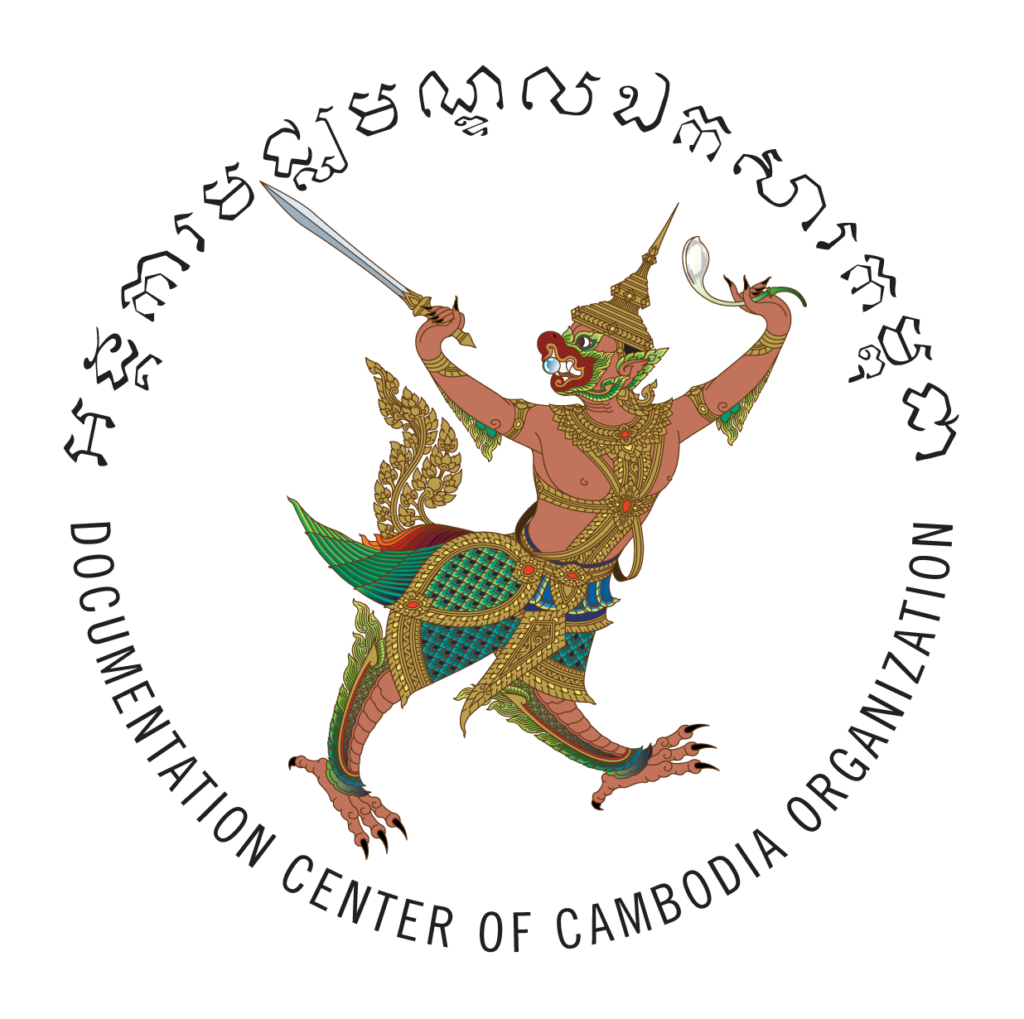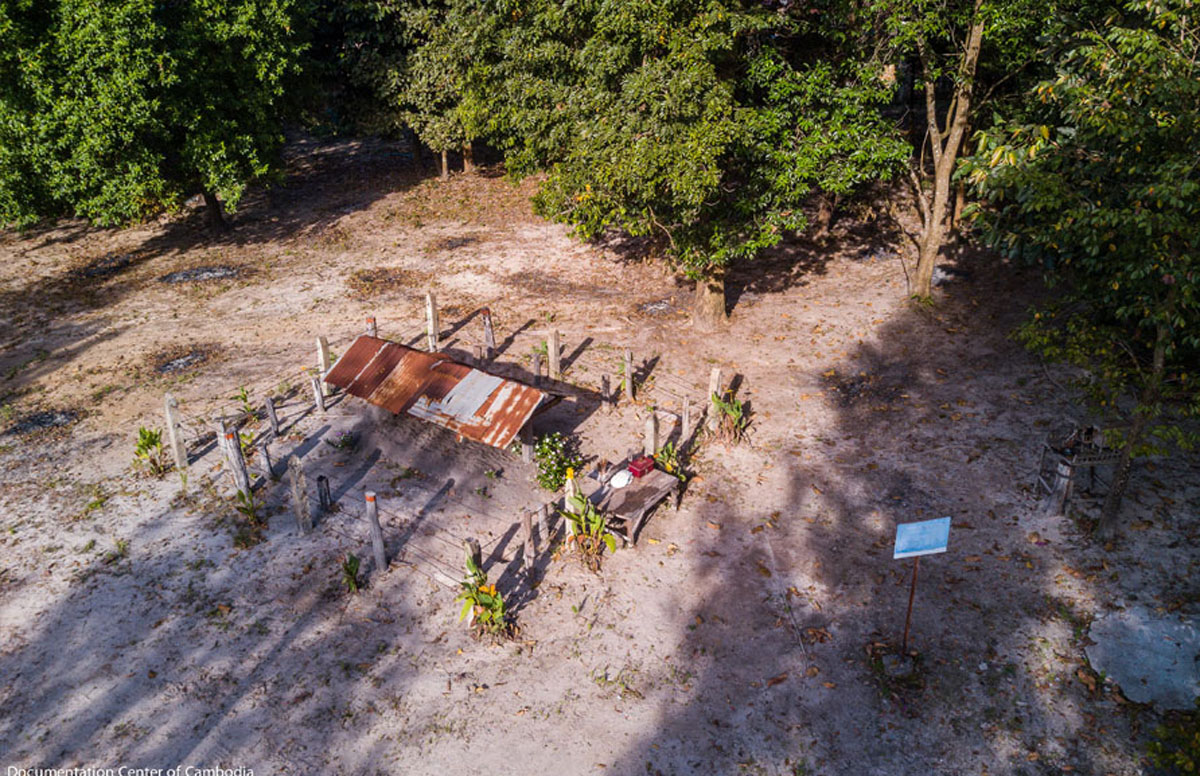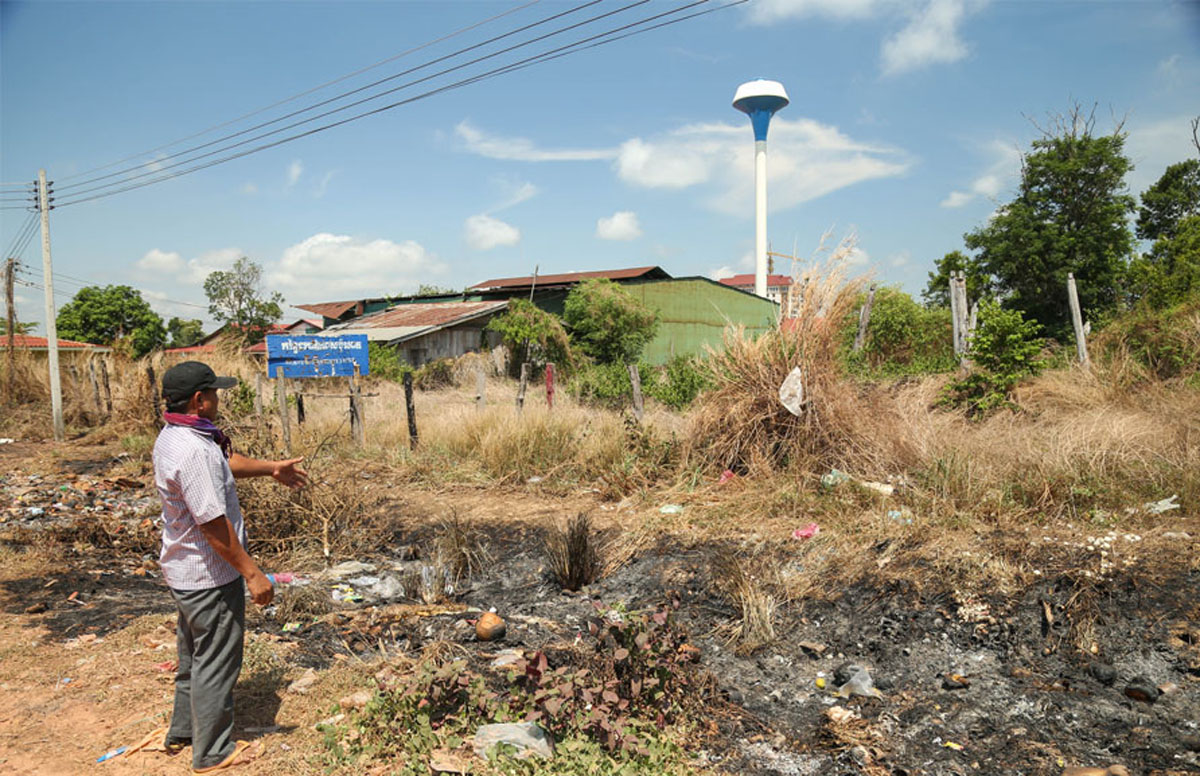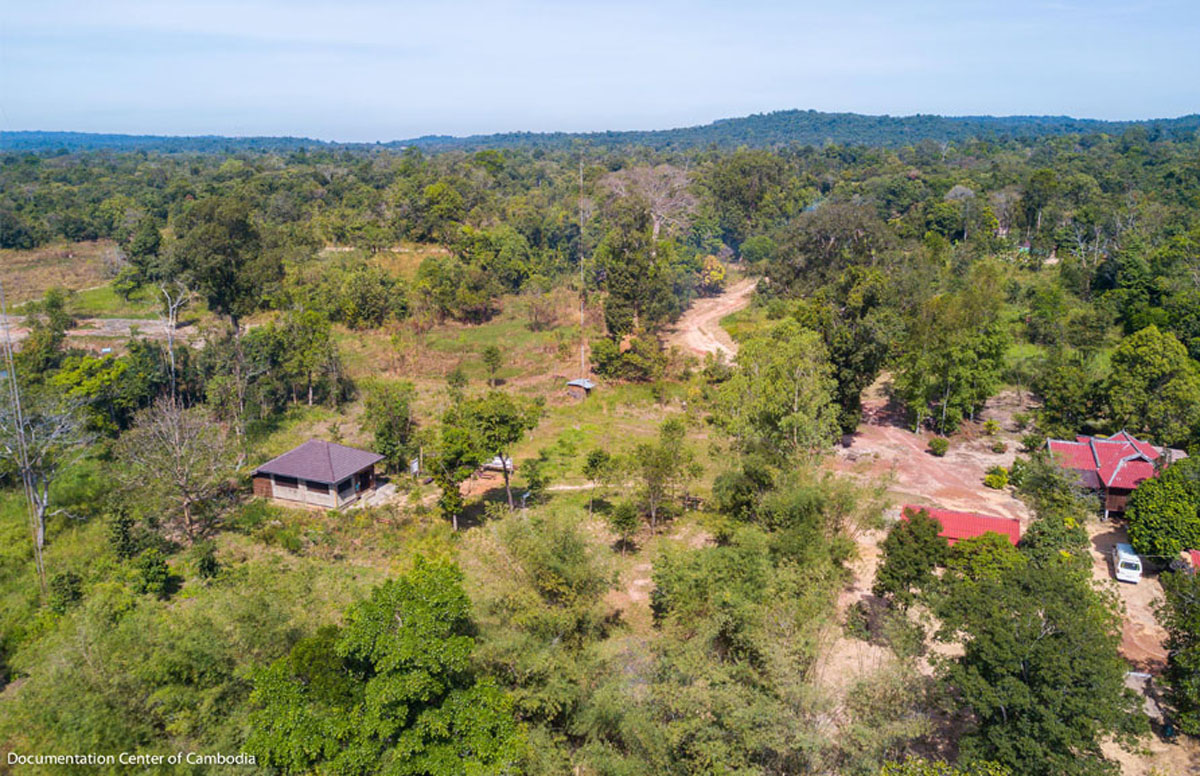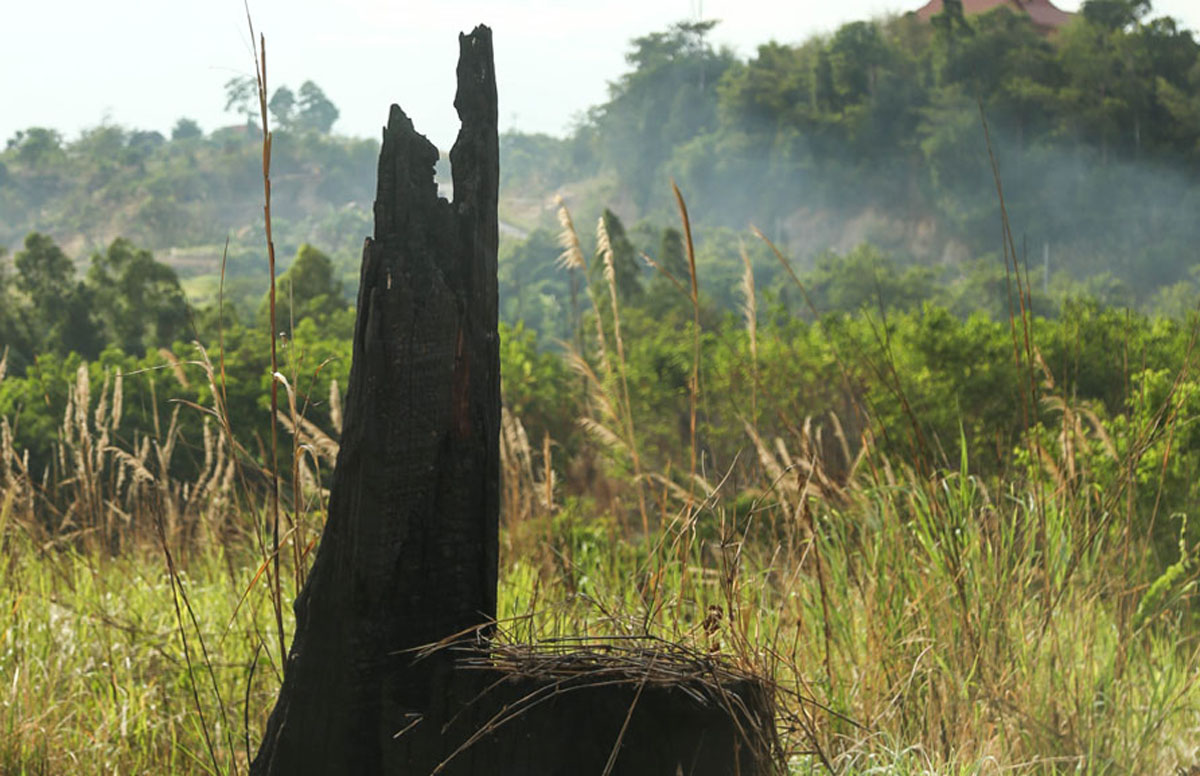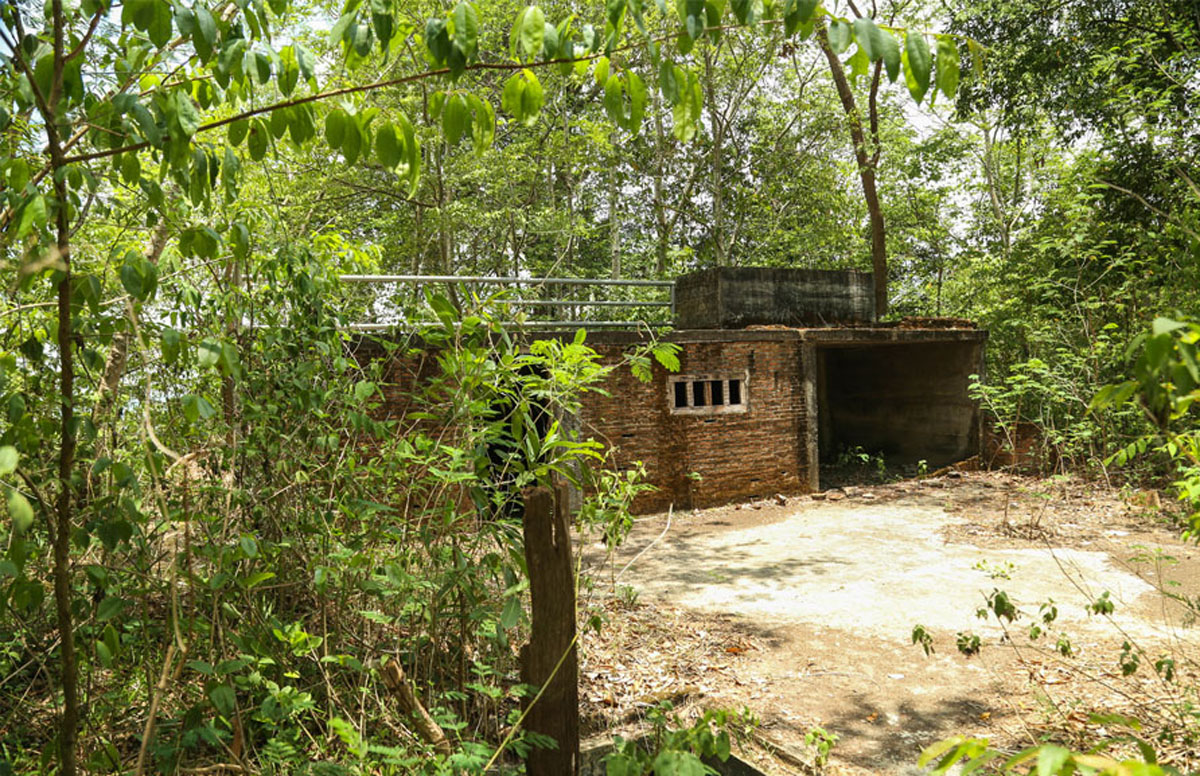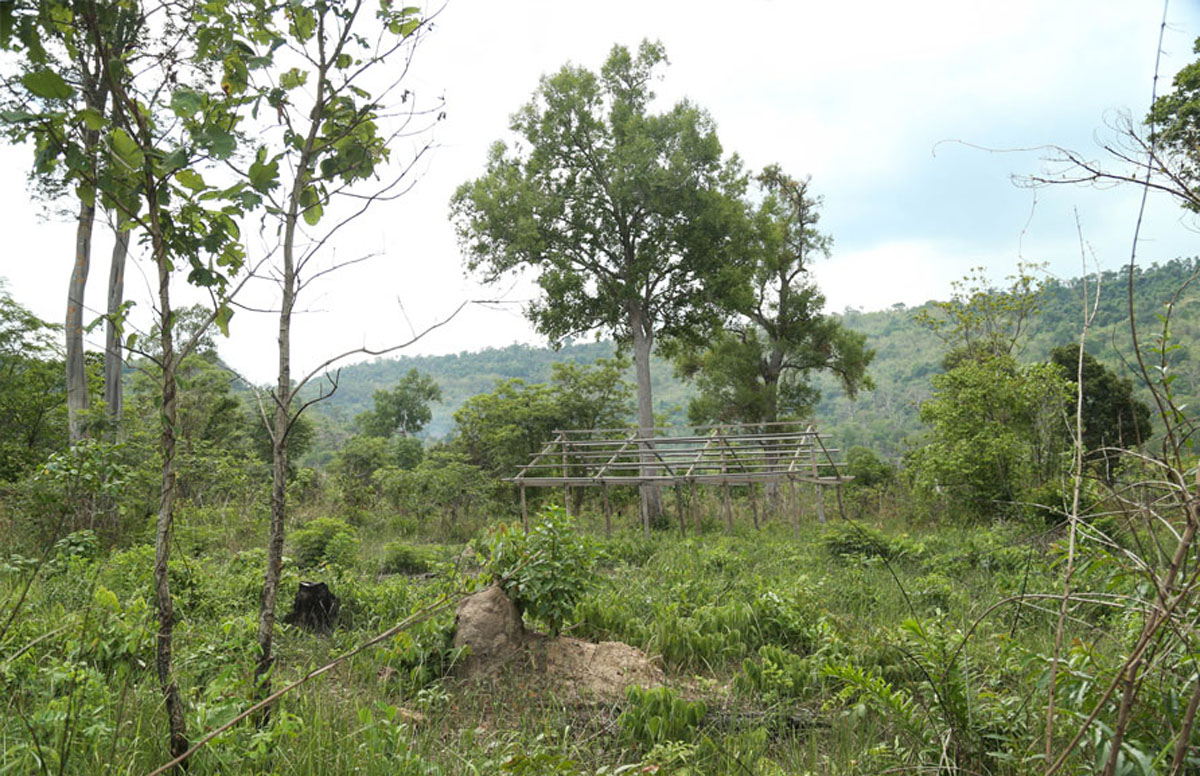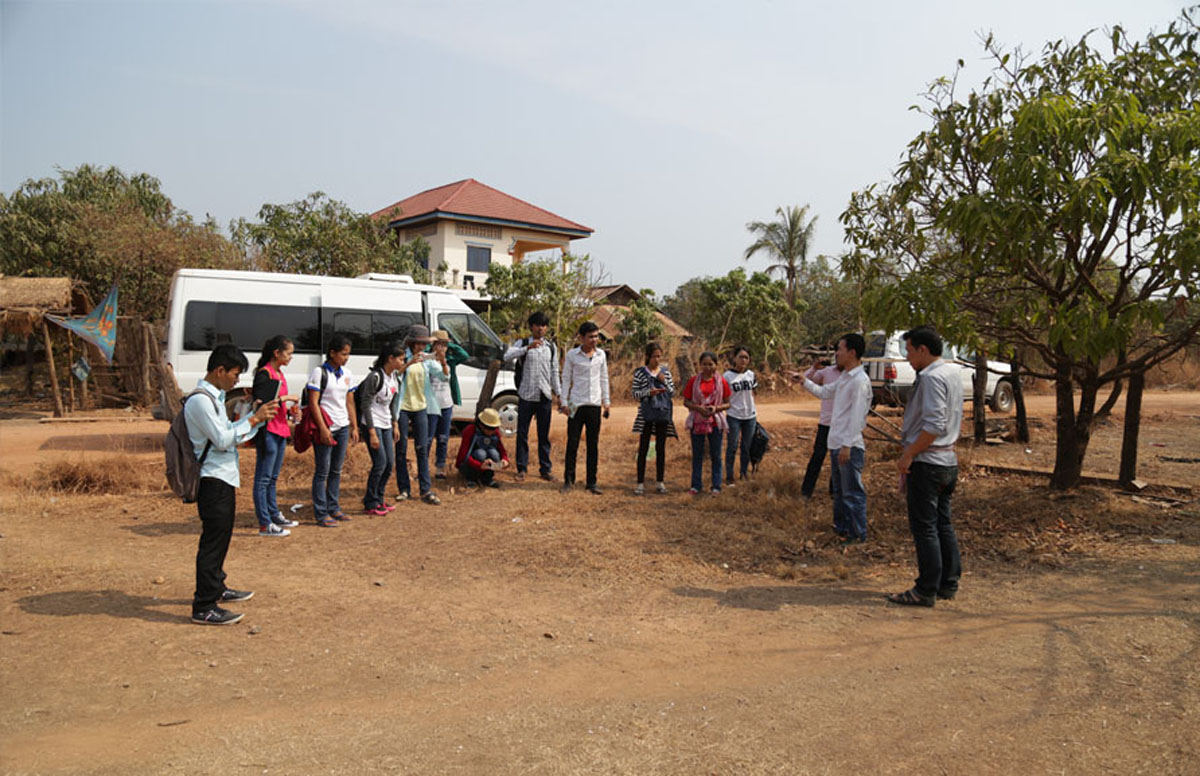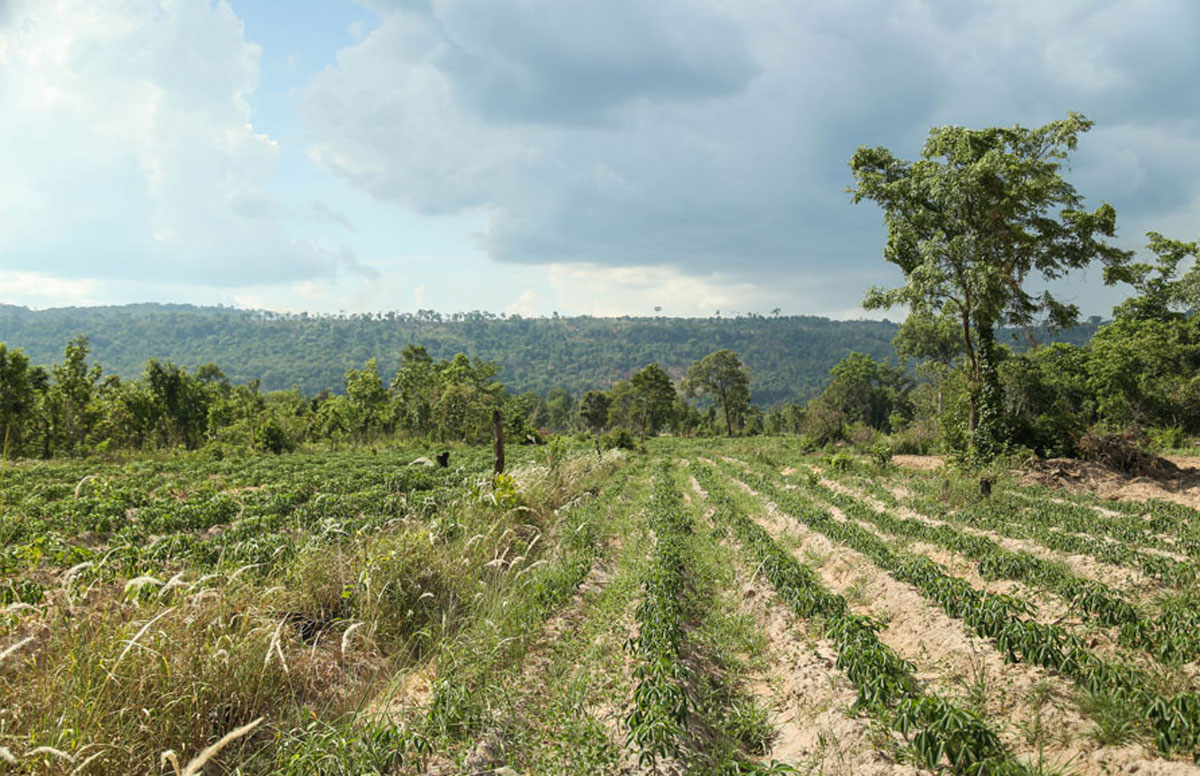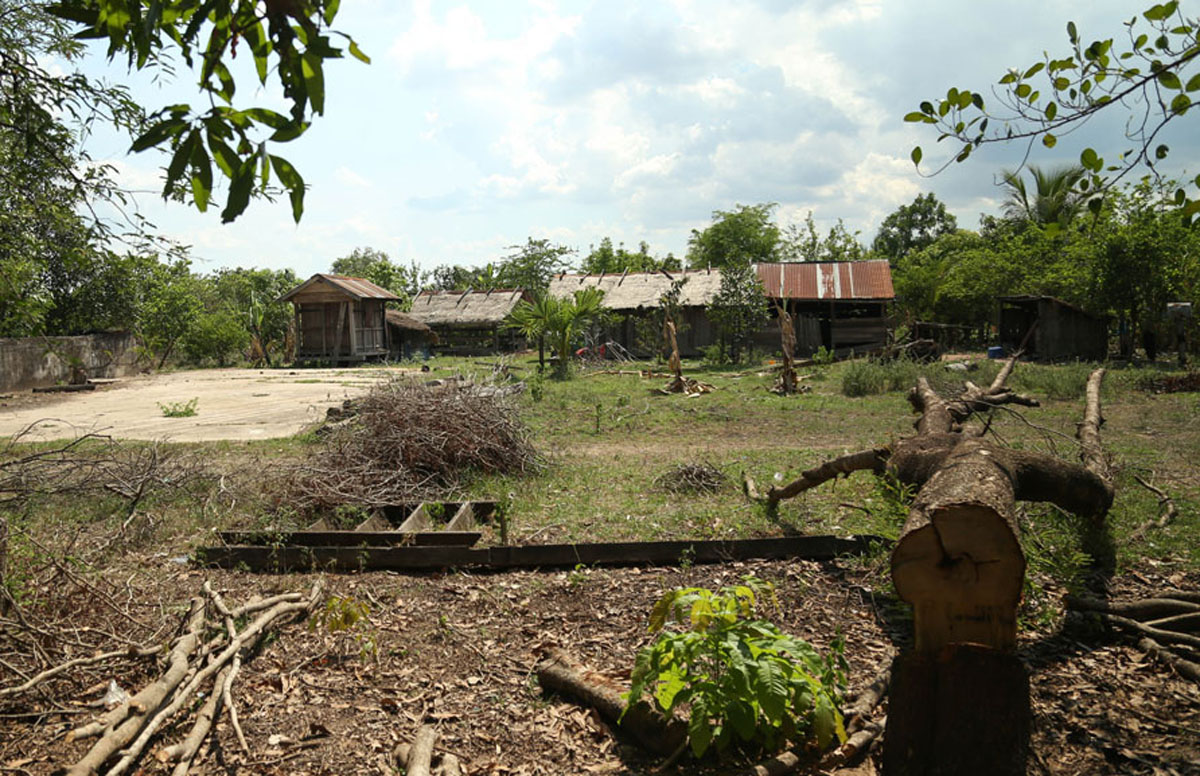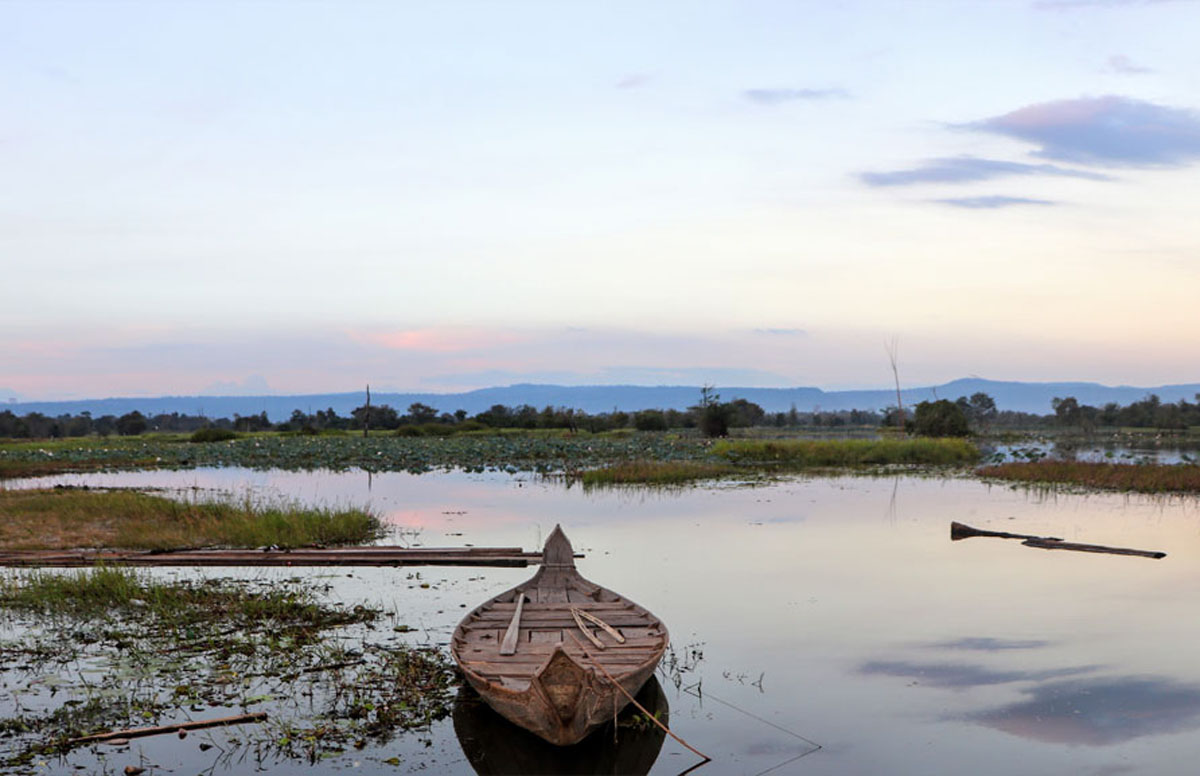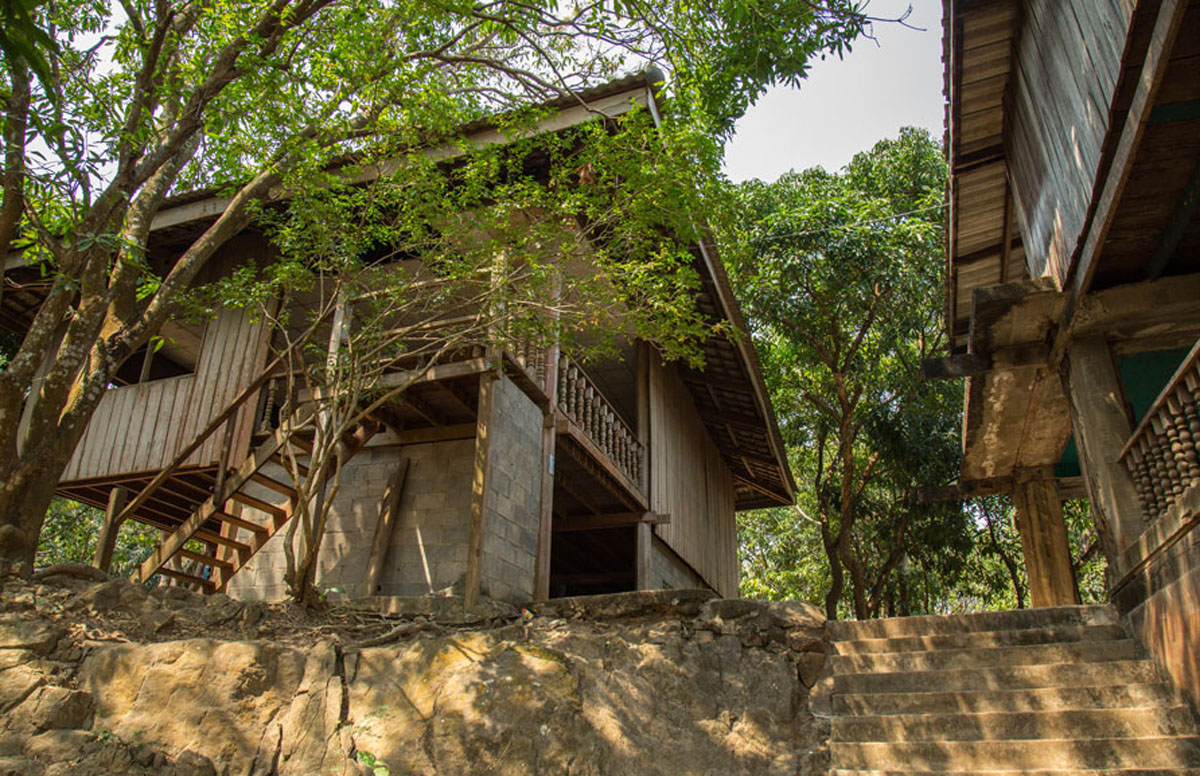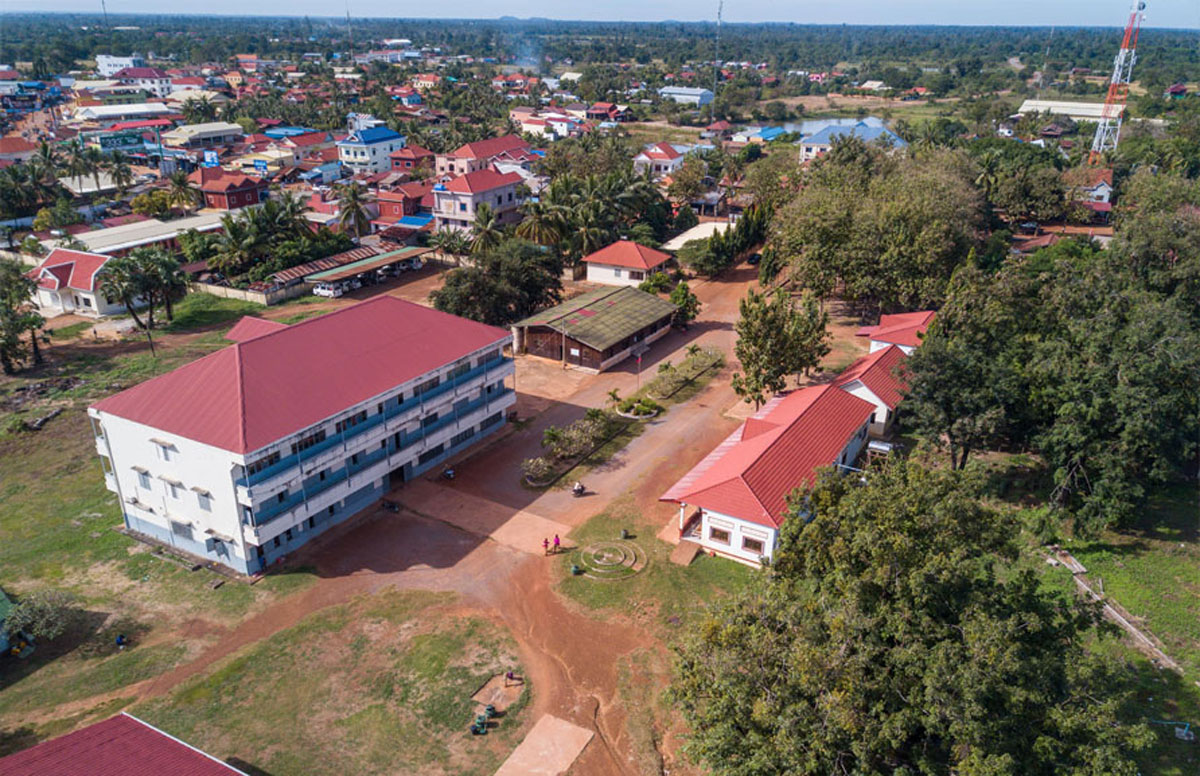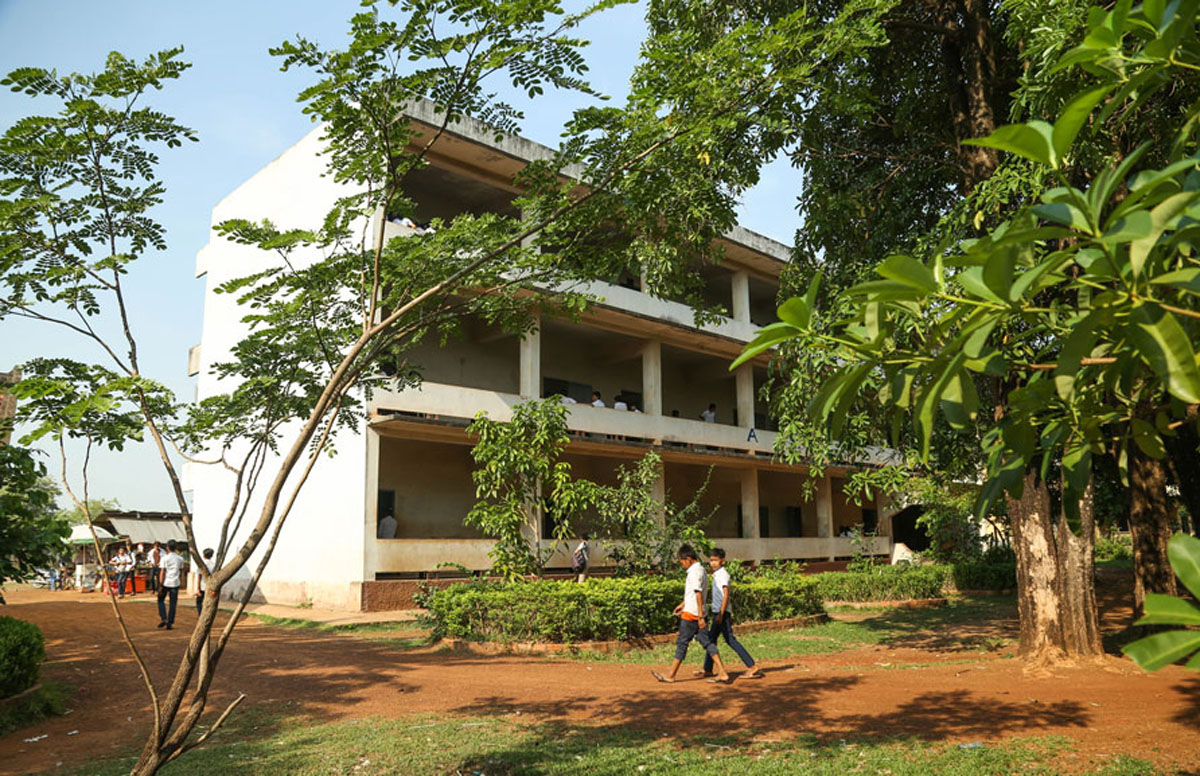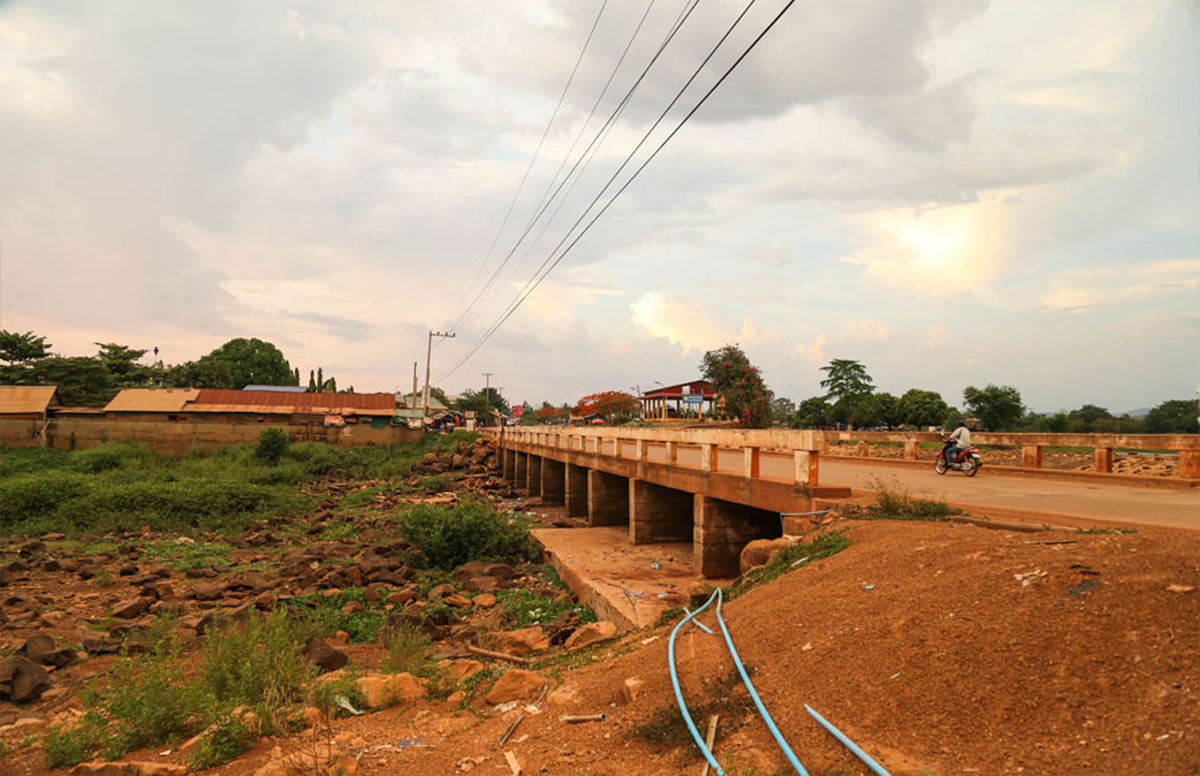Preservation of 14 Khmer Rouge Historical Sites
Comprising 1.207 hectares, the cremation site of Pol Pot is located 13 kilometers from the roundabout of Anlong Veng District along National Road 67 near the Cambodian-Thai border checkpoint at Choam Sra Ngam. It is situated in the Dangrek Mountains in Cheung Phnom Village, Trapeang Prey Commune, Anlong Veng District, Oddar Meanchey Province.
Without access to medicine or oxygen therapy, Pol Pot died of cardiac arrest on April 15, 1998. Nate Thayer, an American journalist, assisted in providing materials to preserve the body for a few days. International journalists arrived to photograph the scene and report on the death of the Khmer Rouge leader. Journalists wondered why Pol Pot’s corpse had black hair, since his hair had been grey when he was sentenced a year earlier in March 1997. Pol Pot’s wife responded, “I dyed his hair black in order to disguise him when we fled to Phou Nay Camp in Thailand, which was the last Khmer Rouge camp in Sisaket Province [Thailand].
Later, a journalist took a lock of his hair to be tested and the result confirmed what his wife had said. Pol Pot’s body was cremated just ten meters away from his cottage at 10:00 a.m. on April 17, 1998. No one was present except Khmer Rouge soldiers. Because the government forces were advancing, most of the Khmer Rouge soldiers had already fled the area. The soldiers who remained could not manage to find enough wood to make a funeral pyre, so they gathered whatever materials were available, such as bamboo, rattan chairs, sofas, and old tires. The soldiers did not collect the cremains, but left it there.
Situated on 0.448 hectares of land in Cheung Phnom Village, Trapeang Prey Commune, Anlong Veng District, Oddar Meanchey Province, the trial site of Pol Pot is located 14 kilometers from the roundabout of Anlong Veng District near the Cambodian-Thai border checkpoint at Choam Sra Ngam. This site was previously used by Ta Mok as place where people traveling in and out of Thailand could park their cars and take a short rest.
After the execution of Son Sen’s family, Pol Pot was brought before a People’s Tribunal on March 28, 1997. This meeting was presided over by Khoem Ngon, Kao Bun Heng, Mok Pen, Chan You Rann, Tep Khunnal, Achar Noeu, and Seng. Foreign journalists, including Thai journalists, were present along with the American journalist Nate Thayer. Approximately 400 to 500 residents of Anlong Veng observed the trial. Khoem Ngon delivered a speech to those in attendance, including the families of the Khmer Rouge soldiers. Following the trial, Pol Pot had no control over the Khmer Rouge movement, and it concluded with a sentence of life imprisonment for Pol Pot and his clique.
Construction of Ta Mok’s house was completed on September 7, 1995. It is situated on 3.025 hectares of land and is located 16.5 kilometers from the roundabout of Anlong Veng District in Cheung Phnom Village, Trapeang Prey Commune, Anlong Veng District, Oddar Meanchey Province.
After journeying eastward from the border pass about three kilometers along the Dangrek Mountains, one will come upon Ta Mok’s House. This was Ta Mok’s residence and the place where top Khmer Rouge leaders gathered (Pol Pot, Khieu Samphan, Nuon Chea, Son Sen and other division commanders). Ta Mok’s central compound in the Dangrek Mountains included houses belonging to Nuon Chea, Son Sen and Ta Mok, as well as their family members. In front of Ta Mok’s house was a shelter for welcoming guests, which was covered with roof tiles in a dragon-skin design. A large koki tree was located at this site, but it burned down some time ago. Flowers and brateal plants from Thailand were grown in the front yard. Ta Mok always instructed his driver to water them every morning. Later, he built another house with strong pillars and a concrete wall, but no tiles. A concrete wall with nets made of steel fiber was built to provide protection from all kinds of ammunition. The house was used as a military command headquarters and walkie-talkies were used for communicating with commanders in the battlefields.
After diplomatic relations and aid from foreign countries were completely cut off, Ta Mok began converting Mountain 200 into a site for manufacturing recycled ammunition. The site was built on June 9, 1994 on 1.142 hectares of land and is located 14.9 kilometers from the roundabout of Anlong Veng District in Cheung Phnom Village, Trapeang Prey Commune, Anlong Veng District, Oddar Meanchey Province.
Prior to 1990, Mountain 200 had been a military camp of the State of Cambodia. Later, in 1993, Ta Mok decided to use Mountain 200 as a site for manufacturing recycled ammunition. Laborers manufactured bullets and the site was equipped with semi-automatic weapons. There was a house 30 meters in length by 10 meters in width which was used solely for manufacturing recycled bullets. There was also a warehouse for storing machinery.
Mr. Sann Roeung, a former Khmer Rouge soldier and currently a tourism officer for the Anlong Veng District Office, confirmed that “during that time Khmer Rouge cadres tried to locate a place to manufacture recycled bullets for AK47’s and AK57’s. A group of twelve people worked together to make between 5000 and 6000 bullets per day.
Located 24.5 kilometers from the roundabout of Anlong Veng District in O’Kra Nhoung Village, Trapeang Prey Commune, Anlong Veng District, Oddar Meanchey Province, are the houses of Pol Pot and Khieu Samphan. They were built on October 6, 1993 on 117.061 hectares of land.
Pol Pot’s one-floor house was constructed of brick, concrete and asbestos-cement roofing tiles. It had a basement to store documents and valuable equipment as well.
Khieu Samphan’s house was also constructed of brick, concrete, and asbestos-cement roofing tiles. In his house, Khieu Samphan also had an office and a fish pond.
Ta Mok built the house for Pol Pot, who had relocated from Pailin to live there. It was called Kbal Tunsaong Village and was their main headquarters.
Located in Cheung Phnom Village, Trapeang Prey Commune, Anlong Veng District, Oddar Meanchey Province, the Cheung Phnom warehouse was built on February 8, 1995 on 1.752 hectares of land. It is located 11.9 kilometers along National Road 67 toward the Cheung Phnom toll. After turning right at that point, it is another 500 meters down the road.
During the Khmer Rouge regime, this warehouse consisted of four buildings, each of which was six meters in width and eight meters in length. The buildings were used for the following purposes:
– Building 1: storing firing pins for landmines
– Building 2: storing percussion caps for landmines
– Building 3: storing material for un-recyled landmine percussion caps
– Building 4: storing trousers, shirts, hats, mosquito nets, hammocks, and two 10,000 liter oil-storage tanks.
During that time, no one was allowed to enter the warehouse except the guards who were assigned to work there. (Mr. Chap Bun Thoeun, a former food supply delivery driver and currently the first-deputy commune chief of Trapeang Prey Commune, clearly remembers that these buildings were used as a warehouse.)
Located 8.9 kilometers from the roundabout of Anlong Veng District, the cremation site of Son Sen and his family members, who were killed on June 9, 1997, is located in Srah Chhouk Village, Trapeang Prey Commune, Anlong Veng District, Oddar Meanchey Province. The site covers 0.062 hectares.
On this site, the body of Son Sen, as well as ten of his family members (including messengers, drivers, and two daughters), were cremated after having been shot to death. His two daughters were dragged to a nearby stream and raped by Rorn, the son-in-law of Ta Saroeun (alias 05). It was reported that the two women were brutally beheaded. Later, Ta Mok and his subordinates collected the bodies from Pol Pot’s subordinates, who had committed the murders, and cremated the bodies together. Ta Mok ordered gruesome photos to be taken of the killings and shown to the villagers of Anlong Veng. The villagers were shocked to learn that Pol Pot had ordered the execution of a top level leader who had joined the struggle with him. Anger arose and divided the group into two—one led by Pol Pot and the other led by Ta Mok.
The two groups fought with each other. Ta Mok then announced to the opposing side, “Please return to your homes and surrender your weapons because we have only a small number of people and we must therefore unite.” Later, the opposing side dropped their weapons and surrendered. Ta Mok arrested a number of those commanders, namely Ta Saroeun (alias 05), Ta San, Ta Yan, Ta Nguon, Khemara, and Ta Sen. He placed them in iron cells, which remain at Ta Mok’s house in the area of O’Chik. Ta Mok ordered his subordinates to build a small house for Pol Pot, who lived there like an ordinary person.
Thirteen and a half kilometers from the roundabout of Anlong Veng District in Cheung Phnom Village, Trapeang Prey Commune, Anlong Veng District, Oddar Meanchey Province, a model rice field was created by Ta Mok on 4.412 hectares of land on August 17, 1994.
Previously, the model rice field had been used as a temporary hiding place for Pol Pot and other senior leaders. The house consisted of five buildings built under a tree. The house was built due to pressure from neighboring countries. Only the senior Khmer Rouge leaders knew about this place. After Pol Pot moved from the house, he ordered his soldiers to farm the site. It then became known as the Model Rice Field.
Located 4.1 kilometers from the roundabout of Anlong Veng District in Khleang Kandal Village, Trapeang Prey Commune, Anlong Veng District, Oddar Meanchey Province, Ta Mok’s Transportation Work Site was built on June 2, 1992 and covers 0.122 hectares.
Mr. Khun Ly, who formerly worked accompanying patients to the hospital and is now an Anlong Veng District Council member, said, “This warehouse was made of wood and had a tile floor. It looked like a place for parking cars.”
Mr. Sann Roeung, a former Khmer Rouge soldier and currently a tourism officer in the Anlong Veng District Office, said, “This warehouse was used as a main supply distribution point.”
Located on the eastern side of Ta Mok Bridge, about 200 meters from the roundabout of Anlong Veng District , Anlong Veng Lake is 417 hectares in size and is bordered by Thleat Commune to the east, Anlong Veng Commune to the west, Trapeang Prey Commune to the north, and Anlong Veng Commune to the south.
Anlong Veng Lake was originally a natural stream with clear water, trees and fish. The Khmer Rouge depended on the fish in the lake as their primary food source. During the dry season, when villagers as well as families of Khmer Rouge soldiers experienced water shortages, Ta Mok began the first of three phases of construction of a dam. The first phase was between 1990 and 1991 when the dam embankment was built. Later in 1992, the embankment was heightened in order for the dam to hold more water. In 1994, he oversaw the construction of the bridge and a further enlargement of the dam embankment. After Ta Mok constructed the dam and the bridge, the water in the lake increased significantly. Ever since then, people began calling it O’Chik Lake or Anlong Veng Lake.
Ta Mok’s house was built on October 17, 1993 on 1.614 hectares of land. It is located two kilometers from the roundabout of Anlong Veng District, followed by a right turn onto the national road for about 500 meters. Ta Mok’s house is situated in Akphiwat Village, Anlong Veng Commune, Anlong Veng District, Oddar Meanchey Province.
The land upon which Ta Mok’s house was built had been a small, elongated hill. However, in order to construct the dam and O’Chik Bridge, workers had to extract the rock from the hill. Thus, the hill was leveled and Ta Mok decided to build his house there.
a) The first house:
Built in 1993, the house was constructed of wood with asbestos-cement roof tiles and a concrete floor. Ta Mok used this house as his headquarters while supervising the workers who were building O’Chik Dam. The house was also used as a site for parking trucks and cars.
b) The second house:
Construction began in 1994 and was completed in 1996. The house consisted of three floors:
The top floor was Ta Mok’s bedroom.
The middle floor was Ta Mok’s living room. Paintings of the temples of Angkor Wat and Preah Vihear, as well as a map of Democratic Kampuchea, were hung on the walls.
The ground floor had only one entrance, which was four meters wide. No one was allowed to enter except Ta Mok. The room was completely closed and seemed to contain secret items.
Based on a conversation with Sann Saroeun, the worker who helped build Ta Mok’s house, the ground floor was used to store important items such as statues, ancient artifacts, and various-sized Buddha statues. It was Ta Mok’s sacred place, where he burned incense and prayed on holy days.
c) The third house:
This house was very large, since it was built to accommodate Ta Mok’s family members as well as other visitors who came requesting cattle, rice, and unhusked rice. In addition, some people came there to receive various donations.
d) The fourth house:
Built in 1993, this house was for the cooks and other staff members. It was considered to be the kitchen. The house consisted of three-stories—the ground floor was used as a cellar; the second floor was a place for the staff and subordinates to eat their meals; and the third floor was used for bedrooms for the cooks.
Located 200 meters from the roundabout of Anlong Veng District, the former Ta Mok Hospital was built on October 17, 1993 on 1.614 hectares of land. The hospital is located in O’Chunh Chean Village, Anlong Veng Commune, Anlong Veng District, Oddar Meanchey Province. The hospital consisted of one three-story building. Ta Lorn, who studied in China, and Ta Leav, who was a construction chief from Thailand, supervised the construction of the building. The hospital was built to treat Khmer Rouge villagers and soldiers. Most of the patients had been wounded in battle or were suffering from malaria. If a patient had a serious disease, he/she would be transferred to Thailand. Medicine was imported from Thailand. During that time, medical equipment was not modern or sophisticated. It consisted only of equipment to treat malaria and some surgical equipment.
Later, in 1998, the Ta Mok Hospital was transformed into the Anlong Veng District Referral Hospital.
Located 700 meters from the roundabout of Anlong Veng District, along the road from Anlong Veng to Preah Vihear, is the former Ta Mok School. It was built on April 1, 1993 on 4.830 hectares of land. The school is situated in Thnal Keng Village, Anlong Veng Commune, Anlong Veng District, Oddar Meanchey Province. It is a three-story brick building with twelve rooms that can accommodate 300 to 400 students. However, it only provided primary school education to students in grades 1 through 5.
At the time, the curriculum included only math and Khmer studies. The textbooks mainly described the ongoing guerrilla warfare and the battles against Vietnamese invaders. Study materials were imported from Thailand and included pens, notebooks, chalk, and blackboards. The Khmer Rouge published their own textbooks, which they entitled Democratic Kampuchea. Teachers did not receive a salary, regardless of whether they were male or female. Today the school is known as Anlong Veng High School.
Situated along the road from Anlong Veng to the Choam Sra Ngam Khmer-Thai border pass, the Ta Mok Bridge (O’Chik Bridge) was built on January 1, 1996. The bridge is 200 meters beyond the roundabout of Anlong Veng District in O’Chunh Chean Village, Anlong Veng Commune, Anlong Veng District, Oddar Meanchey Province. The bridge was constructed using Thai technology and machinery and took two years to complete.
The O’Chik Bridge was built in order to alleviate the difficulty of transporting food supplies and ammunition across the stream. Ta Mok decided to enlarge the dam and bridge in order to ease the journey.
Walking Trails – Anlong Veng
We Walk Together Toward Peace, Security and Prosperity
Anlong Veng District
Walking Trails – Anlong Veng has had a special privilege to host its annual “Walking Trails” on Dangrek Mountain in Anlong Veng district, to highlight the importance of peace, security and prosperity in the former final stronghold of the Khmer Rouge movement. Anlong Veng was reintegrated into the Royal Government of Cambodia (RGC) in 1998, the year that the Cambodians have enjoyed a full peace.
The calendar date 1 February, 2020 is set to start our long walk toward peace and prosperity in Anlong Veng. Anlong Veng is a small district in Oddar Meanchey province, which is located in the northwest of Cambodia.
Nestled along a border with Thailand, Anlong Veng contains numerous physical reminders of Cambodia’s horrific past. The Khmer Rouge was the name given to the communist regime that swept over Cambodia in April 1975. For almost the next four years, Cambodians suffered from forced labor, starvation, torture, and terror. Under Pol Pot, the regime consumed its citizens and nearly destroyed all Cambodian institutions, including religion and culture.
Families were broken up, loved ones were separated, and many people were arrested and killed. When the Khmer Rouge regime finally fell in January 1979, the country was covered with at least 20,000 mass graves. Even though the regime was tossed from power in 1979, many Khmer Rouge members continued to fight a guerrilla war, and for almost the next two decades, they controlled a number of areas in Cambodia.
Anlong Veng is recognized as the last stronghold of this Khmer Rouge guerrilla movement. The area contains dozens of physical reminders of the regime’s control, and many former Khmer Rouge cadres continue to reside in the area.
This race seeks to call attention to not only the historic significance of Anlong Veng, but also its significance as a mile marker for the country’s peace, security, and prosperity. Anlong Veng may have been the last stronghold of the Khmer Rouge, but it is also a symbolic milestone in Cambodia’s rise from its horrible past. The reintegration of Anlong Veng meant a new beginning for Cambodians in the region who had struggled with war and all of its consequences, including disease, disability, poverty, and death. The reintegration of the region also meant a new beginning for all of Cambodia, which had finally put an end to over three decades of war, genocide, and mass atrocities.
Today, Anlong Veng continues to exude an air of mystery, adventure, natural beauty, and to some extent danger. The area has been a front-line area for border disputes with Thailand, and certain sections of the jungle continue to be off-limits because of mines.
But while old guidebooks may describe Anlong Veng as a place of risky adventure, the region is undoubtedly safe, secure, and peaceful. This race seeks to highlight these qualities through a scenic path that takes runners and the public along some of the more beautiful sections of the region.
The area has a diverse natural beauty that will be observable during the race. Small streams, rice paddies, ponds, and water falls can be found throughout the area, and parts of the race will include portions where one can look into Thailand from a scenic cliff. The race will include sections that are close to various historic artifacts and buildings, including a late, local warlord’s main headquarters and residence.
The race aims to give the public an opportunity to tour Cambodia’s past, as well as reflect on Cambodia’s future. In many ways, Cambodia is a symbolic graveyard to malevolent or failing ideologies, animosities, and strategies. Yet, in spite of its historic conflicts and struggles, Cambodia stands as a land of hope and opportunity. This race will culminate with a reflective run and walk to Anlong Veng Peace Center (Ta Mok’s Former House on Dangrek Mountain), as a symbolic demonstration of all Cambodians’ capacity to learn and overcome their past. While we will never escape our history, we do not have to be enslaved by it. It is only by learning from the past that we can ever hope to move forward.
Event:
Saturday, 1 February, 2020
Starting Time: 6 a.m.
Start Point: O-Thmar Village (Lim Heng Reservoir)
Final: Anlong Veng Peace Center (Ta Mok’s Former House on Dangrek Mountain)
Distance: 5 Kilometers
Hosted by:
Ministry of Tourism
National Olympic Committee of Cambodia
Oddar Meanchey Provincial Administration
Anlong Veng District Administration
Anlong Veng Peace Center
of the Documentation Center of Cambodia
For more information, please contact:
Dr. Ly Sok-Kheang, t: 012 570 465
Mr. Sok Vanna, t: 011 833 318
Mr. Hor Chin Vireak Yuth, t: 097 977 7778
Dr. Chuck Chumnor, t: 081 888 877
Mrs. Thinni Moni Reasmei, t: 012 676 364
